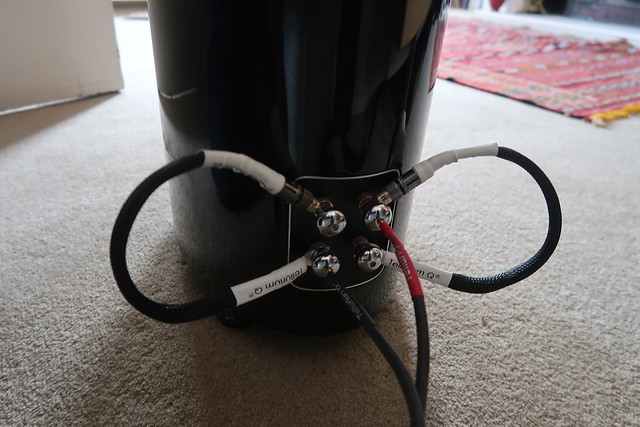andrews
pfm Member
Dear All
I have previously posted my findings aboutthe use of 'better' jumpers with 'lower' speaker cables (in my case Tellurium Q Silver Diamond and Ultra Black)
https://www.pinkfishmedia.net/forum...ables-a-cheap-er-upgrade.222659/#post-3547512
I came acrross the concept of 'dimaond -wiring' as outlined here
https://www.pursuitperfectsystem.com/are-you-diamond-wiring-your-speakers.html
There are the usuall polarised discussions on another forum, but I gave it a go - and can report a further (subtantial) benefit(vide infra).
I have no idea why - but would be intetested if anyone else has a similar experience?
 IMG_8695 by visitdetails, on Flickr
IMG_8695 by visitdetails, on Flickr
NB No rug comments please

I have previously posted my findings aboutthe use of 'better' jumpers with 'lower' speaker cables (in my case Tellurium Q Silver Diamond and Ultra Black)
https://www.pinkfishmedia.net/forum...ables-a-cheap-er-upgrade.222659/#post-3547512
I came acrross the concept of 'dimaond -wiring' as outlined here
https://www.pursuitperfectsystem.com/are-you-diamond-wiring-your-speakers.html
There are the usuall polarised discussions on another forum, but I gave it a go - and can report a further (subtantial) benefit(vide infra).
I have no idea why - but would be intetested if anyone else has a similar experience?
 IMG_8695 by visitdetails, on Flickr
IMG_8695 by visitdetails, on FlickrNB No rug comments please

